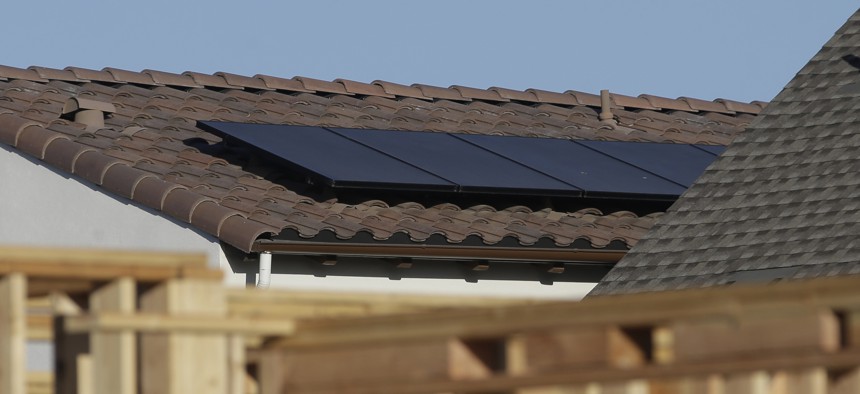Solar Power More Than Doubled in Many Cities, Report Finds

Solar panels are seen on the rooftop on a new home in Sacramento. California is the first state in the nation to require homes built in 2020 and later be solar powered. AP Photo

Connecting state and local government leaders
Los Angeles topped the list of cities leading in solar power installation.
Los Angeles leads the country in the amount of energy produced by solar power, according to a new report that notes the amount of solar capacity currently installed in just 20 cities is more than what was available in the whole United States in 2010.
Out of the 57 cities looked at for each of six annual reports by Environment America Research & Policy Center, 45 cities more than doubled their solar photovoltaic (PV) capacity between 2013 and 2018.
Los Angeles frequently tops the solar energy list, although in 2016 the city was bested by San Diego. But in the past two years, Los Angeles installed more than 150 megawatts of solar capacity, the report notes. Along with those two cities, Phoenix, Honolulu and San Jose round out the top five solar locations.
“Cities are rapidly adopting solar energy and driving the renewable energy transition across the country, bringing pollution-free power to our homes, schools and workplaces,” said Bret Fanshaw, the center’s solar campaign director.
The report by the center and think tank Frontier Group is based on a survey of data sources of the main cities in the country’s biggest metropolitan areas. To come up with the rankings, researchers culled data from utilities, city and state agencies, electric grid operators and non-profit groups.
For 2018, the report expanded to include 69 cities, finding that Honolulu ranks highest for solar capacity per resident.
Researchers found that each region has cities where residents are significantly investing in solar, from Burlington, Vermont and Newark, New Jersey in the northeast to New Orleans, Louisiana and San Antonio, Texas in the central southern states.
In some cases, cities are making the investment in solar energy themselves. Santa Fe, New Mexico has installed solar on city facilities and renewable energy sources provide 25 percent of the city government’s electricity needs, the report says. In Massachusetts, the city of Worcester built a solar farm on top of a former landfill, which is currently the largest farm owned by a local government in the region.
The report suggests state and local governments adopt policies to encourage solar expansion, such as requiring new construction to include panels or at least be solar ready. Local governments can also streamline permitting and inspection processes.
The full report can be seen here.
Laura Maggi is the Managing Editor of Route Fifty and is based in Washington, D.C.

NEXT STORY: Trump Order Puts State Power Over Pipeline Approvals in Crosshairs





